22nd September
Stevenston, Troon Harbour and Irvine Harbour
When I studied my iPhone
weather app, it wasn’t a pretty sight.
Cloud, rain and high winds were moving through Central Scotland, and
would continue for the whole day. I did though see a possible good
weather window that would appear over the Ayrshire Coast early to mid
afternoon. So that’s where we headed, starting at Stevenston
Point. Well actually we started at Stevenston Morrisons where we had an
excellent breakfast (9.5/10: John’s was missing half a
tomato).
The rain had stopped by the time we reached the Point, but it was very
breezy and the light was poor. Using the car door as shelter from the
strong breeze I snapped some passing birds - Cormorant, Gannet and
Oystercatcher. A Razorbill surfaced near us but disappeared
just a quickly.
| Cormorant |
Gannet |
Oystercatcher |
Razorbill |
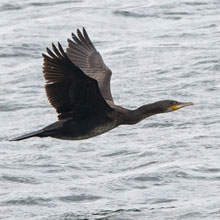 |
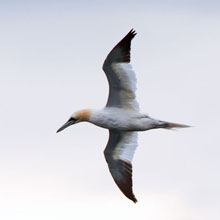 |
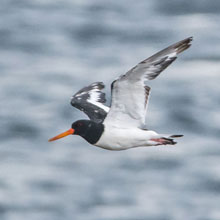 |
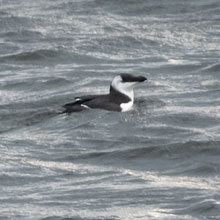 |
There were quite a few
Eider on the move toward Saltcoats. A lone
Sanderling
in winter plumage flew the other way over the rocky tip of the Point.
Soon afterwards, a passing Great Black-backed Gull made a sudden dive
to pick up an unfortunate Crab which it carried off to the Ardeer shore.
Fairly satisfied with what we’d seen, we set off for Troon
Harbour.
On our way off of the Point I took a picture of one of the many Herring
Gulls tap dancing for worms on the playing fields.
| Eider |
Sanderling |
Great Black - backed Gull |
Herring gull |
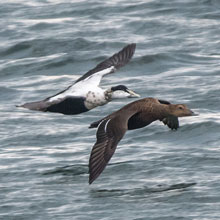 |
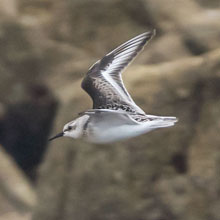 |
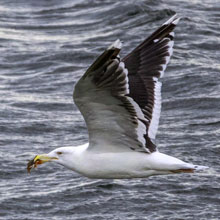 |
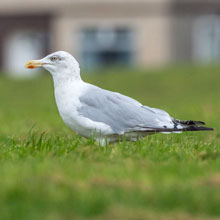 |
At a gloomy Troon
Harbour we were met by a Rock
Pipit
flitting between rocks. Also on the rocks were Cormorants and Eider. I
snapped an adult drake Eider with an immature drake. While I was
photographing those birds, an inquisitive Grey
Seal surfaced
just 30m from where we were sitting.
| Rock Pipit |
Cormorant |
Eider |
Grey Seal |
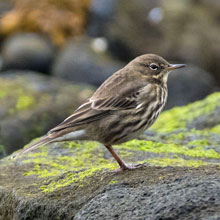 |
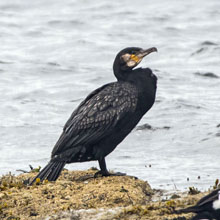 |
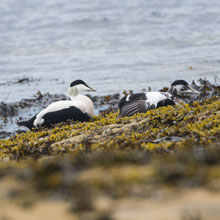 |
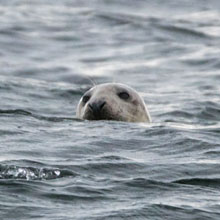 |
I spotted a few Ringed
Plovers and Oystercatchers tucked down between
rocks on the shoreline. John drew my attention to a flock of about 60 Knot that
flew onto rocks not that far from the Plovers. They were rather nervous
as several times they failed to settle, quickly taking to the air
before finally disappearing to an area north of the harbour (see
“Pictures of the Week“, below).
| Ringed Plover |
Oystercatcher |
Knot |
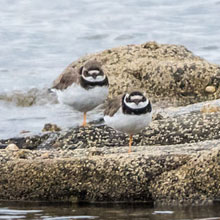 |
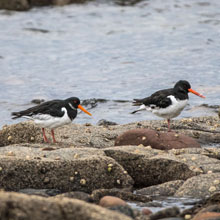 |
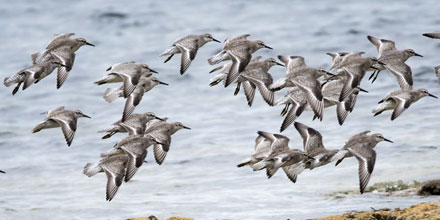 |
Below shows some of the
nervous Knot flock on the rocks:
As we made our way off of
the sandy shore I photographed any wildflowers
I came across. My first find was some pink Sea Rocket. Next I took a
photo of flowers of Pencilled Cranesbill that where showing signs of the
rainy conditions we had just missed. Also showing evidence of heavy
rain were some Scentless Mayweed flowers, their white petals drooping
below their central discs. The final flower I found was a Prickly Sow
Thistle.
| Sea Rocket |
Pencilled Cranesbill |
Scentless Mayweed |
Prickly Sow Thistle |
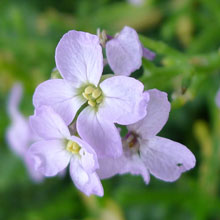 |
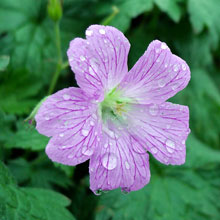 |
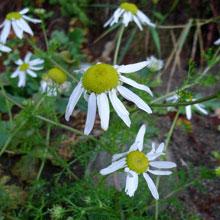 |
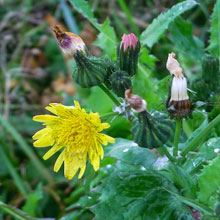 |
I got a nice shot of a
young Starling foraging on the rocks in front of
the car park. Nearer the water a flock of Shag were very active (see
also “Pictures of the Week“, below).
Beside them a
Curlew stood still atop a large boulder. A rescue helicopter flew
northwards, its red flashing light glowing clearly in the dim lighting.
| Juvenile Starling |
Shag |
Curlew |
|
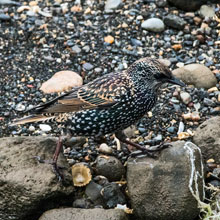 |
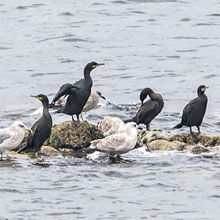 |
 |
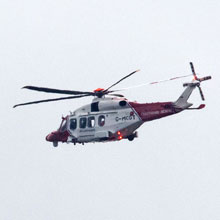 |
Our last stop of the
trip was a visit to Irvine Harbour. As we walked
by the River Irvine, the sun finally made an appearance. A pair of Mute
Swans were wading through seaweed making their way out of the water.
Just beyond them on the shingle bank a female Pied Wagtail was standing
watching its partner. The pair of them flew off, encouraged by the
presence of a big dog. I spotted a wee flock of Sandwich
Terns
on some rocks at the head of the Estuary. To get some better shots I
carefully descended the embankment onto the sands and, careful not to
be caught by the incoming tide, I got some reasonable pictures,
including a few of parent birds bringing freshly caught fishes to their
young. I also captured the moment one of those birds added some guano
to the environment (also see “Pictures of the
Week“, below).
As we returned to the
car John pointed out four fairly distant Common
Seals lounging on the River Garnock. He then directed my attention to a
female Roe
Deer just
across the Irvine at the confluence of the rivers. I took a shot of
a Jackdaw on the grassy bank between us and the car. As we carefully
ascended that bank, watching out we didn’t stand on dog dirt,
eagle-eyed John discovered an interesting mushroom called Blackening
Waxcap. It is is so-named
as its cap turns black when it is damaged (the damage is apparent in
the picture below).
| Common Seal |
Female Roe Deer |
Jackdaw |
Blackening Waxcap |
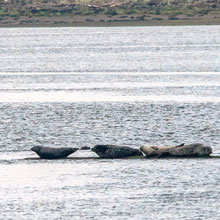 |
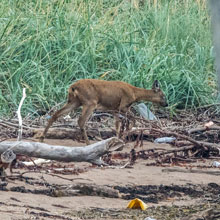 |
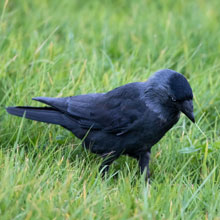 |
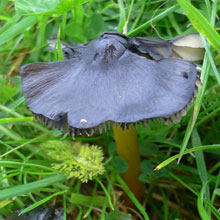 |
My fair-weather strategy
worked since we didn’t experience rain
after we stepped out of the car at Stevenston Point. The rest of
Central Scotland wasn’t so lucky. The light was very poor
though,
but we accumulated a decent record of our usual number of sightings. My
favourite moment was watching the Sandwich Terns as they plummeted into
the sea, emerging with fish and taking them to their hungry chicks. We
ended the day with tea and chocolate eclairs before driving home up the
M77. We’re into Autumn now so I think we may need to look out
the
thermals for next week.
Pictures of the Week:
| Knot |
Shag |
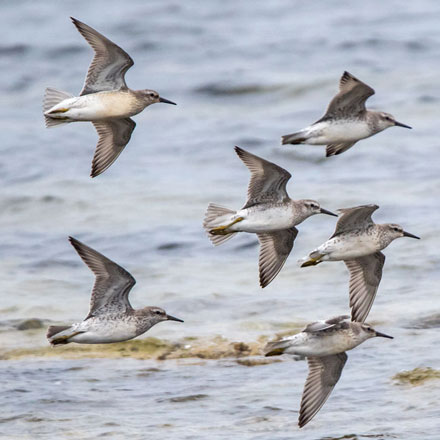 |
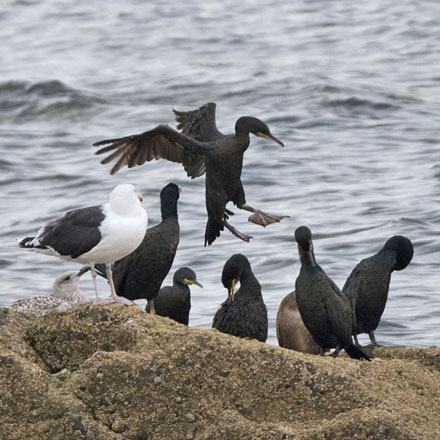 |
| Sandwich
Tern |
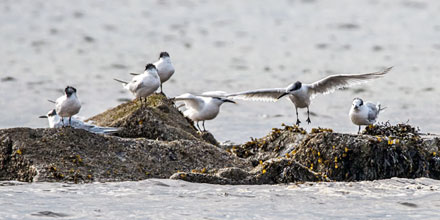 |
15th September 2019:
Linlithgow Loch (Map) and Blackness
The weather forecast was
gloomy - not much rain but poor light until late afternoon. There had
been a report of a Ruddy
Shelduck
at Blackness on the Upper Forth so I decided we’d have a go
at
locating it. En route we nipped into Bathgate Morrisons where we had a
lovely breakfast (9/10: -1 for drippy teapot). We stopped off at Linlithgow
Loch (Website) for
an hour. The tide on the Forth was low at that time so the birds would
have been too far out for decent pictures. Straight away we watched a
Rook attempting to hide an acorn in a field (see also,
“Pictures
of the Week”, below). Probably it was building a wee store
for
the winter. Around the Loch edges there were lots of birds. A few
Lesser Black-backed Gulls were ever-watchful for a feeding opportunity.
A pair of Cormorant were very close, sitting on large bare branches.
The Loch has a sizeable population of Cormorants. A couple of Little
Grebes were fishing a bit further out.
| Rook |
Lesser Black - backed Gull |
Cormorant |
Little Grebe |
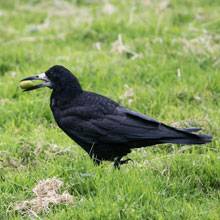 |
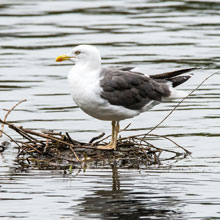 |
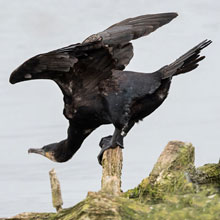 |
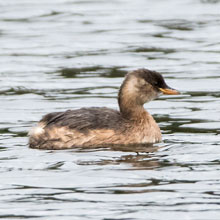 |
There were quite a few
Coots. I was watching to see if I could get a
shot of them quarrelling but they were unusually sociable. I snapped a
juvenile Jackdaw that
was on a dead branch. It’s brown-tinged
“baby”
plumage was still evident around the neck. A 1st year Black-headed Gull
sat nearby.
| Coot |
Wood Pigeon |
Juvenile Jackdaw |
1st Cycle Black - headed Gull |
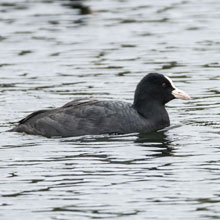 |
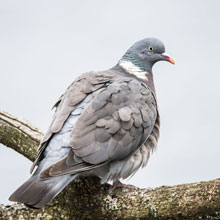 |
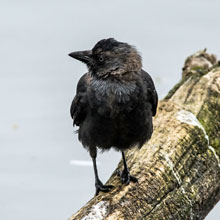 |
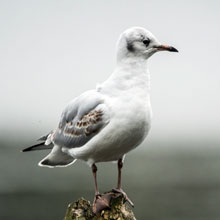 |
The picture below shows
the poor light, but you can still appreciate how Linlithgow Castle
dominated the picturesque scene.
A juvenile Lesser
Black-backed Gull was carrying a stick in its beak as
if it was leading a band with a baton, followed by an assembly of
Mallards. Next I managed a shot of a young Moorhen as it clambered over
a fallen tree. A couple of large cygnets approached the walkway where
their parent Mute Swan (see “Pictures of the Week”,
below)
was posing for the camera hoping for food.
| 2nd Cycle Lesser Black - backed Gull |
Mallard |
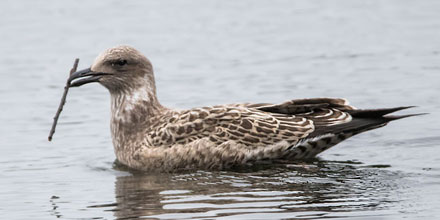 |
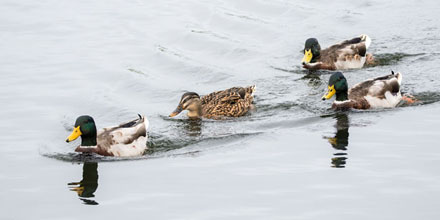 |
| Juvenile Moorhen |
Juvenile Mute Swans |
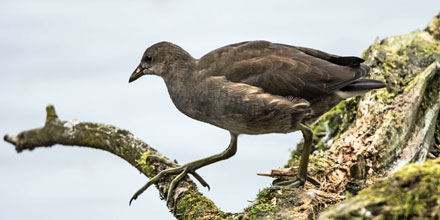 |
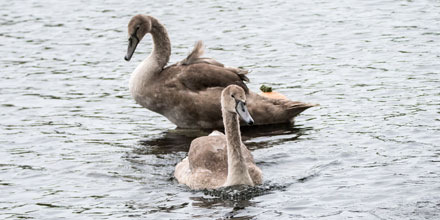 |
We drove the short
distance east to Blackness
along the route the Scottish Royals must have taken as they journeyed
the Forth coast. We parked by the harbour and walked along the Castle
approach road. John spotted a Curlew foraging on the dimly lit shore.
We passed through a metal gate and made our way onto a flat grassy area
that overlooks the wide expanse of the Firth of Forth. The three
bridges were shrouded in sunless grey when we arrived. We hoped the Sun
would eventually make an appearance. A jaunty female Pied Wagtail
hopped in front of us, managing to catch something tasty. We hunkered
down on the rocky shore at the Black Burn and waited to see what would
show. A group of familiar birds sidled relatively close. A few Dunlins
flew in to join several adult and juvenile Ringed Plovers.
| Curlew |
Female Pied Wagtail |
Dunlin |
Ringed Plover |
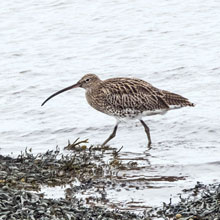 |
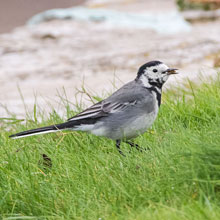 |
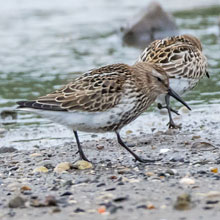 |
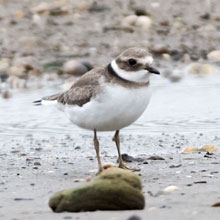 |
A lot further out the
advancing tide was covering the sands where small waders and Common
Shelduck were
feeding. More birds were on the move as the sands were flooding. A small
flock of Bar-tailed
Godwits flew
towards the Black Ness rocks and many Sandwich
Terns were
noisily moving across the shore looking for new areas to feed. I took a
record shot of what appears to be a winter plumage Black
Tern.
| Shelduck |
Bar - tailed Godwit |
Sandwich Tern |
Black Tern |
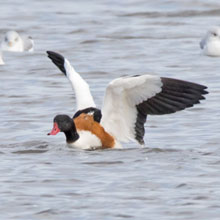 |
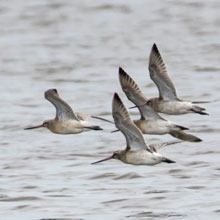 |
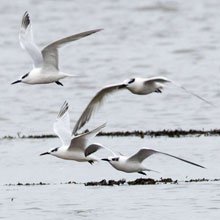 |
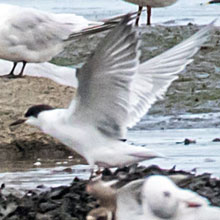 |
Then the Sun came out! A
vast cloud of over 500 Greylags honked their way onto the water to the east
of Blackness. A couple of Pink-footed
Geese were among them.
| Greylag Goose |
Pink - footed Goose |
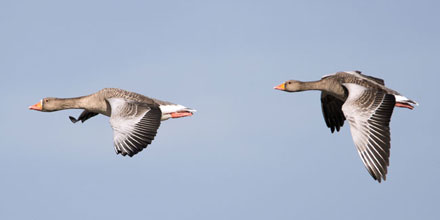 |
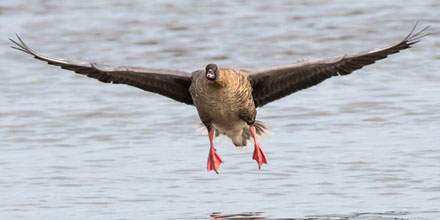 |
We moved off of the beach
and walked east to check out the geese, hoping
the Ruddy Shelduck was with them. On the way I got nice shot of a
juvenile Greenfinch (see “Pictures of the Week”,
below) as
it chewed on some Knapweed seeds. When we approached the geese I
noticed a probable leucistic Greylag swimming with the other Greylags.
Another goose stood out in the now brilliant sunshine. It was an Emden
Goose,
a white domestic goose that somehow had escaped captivity. We
couldn’t see the Ruddy Shelduck until a nice passerby, who
admitted she knew little about birds and who I’d
been
explaining what we were looking for, said pointing, “Is it
that
one there?”. It was. Slightly red-faced I thanked her for
finding
the Ruddy Shelduck (see also, “Pictures of the
Week”,
below).
| Pink - footed Goose |
Greylag Goose |
Emden Goose |
Ruddy Shelduck |
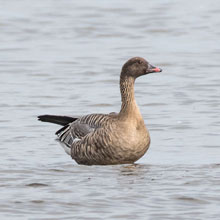 |
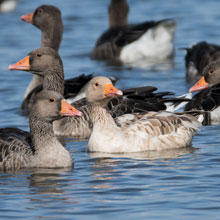 |
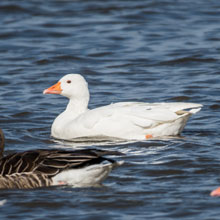 |
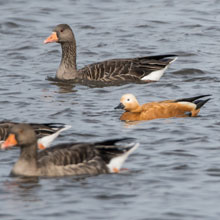 |
We said farewell to a
panorama that had been transformed by the much improved light. We could
now see the famous Forth bridges.
On our return journey we
came across our only butterfly sighting, a
beautiful Painted Lady. On some hedges a gathering of twittering House
Sparrows were animated by something or other. On the sea wall I snapped
a handsome Jackdaw and also a very pretty Collared Dove.
| Painted Lady Butterfly |
House Sparrow |
Jackdaw |
Collared Dove |
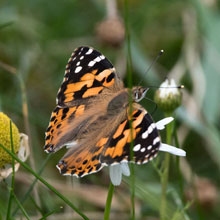 |
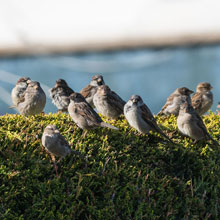 |
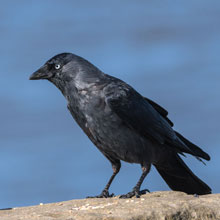 |
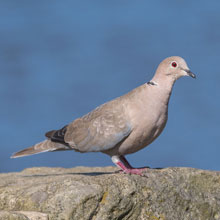 |
I ended up having taken
over 600 shots (and that’s after deleting
the “duffers”). About a third of them were taken in
the
early gloom, and some photos have been passed over for brighter
pictures. So seen but not shown above include Grey Heron, Redshanks,
Common Gull, various insects and flowers and views. The trip was a
resounding success as we achieved our objectives of catching the
incoming tide and finding (thanks to the nice lady) the Ruddy Shelduck
and maybe a Black Tern. We demolished two delicious cream and
strawberry tarts washed down with strong tea. An apt reward for some
proficient birding.
Pictures of the Week:
| Rook |
Mute Swan |
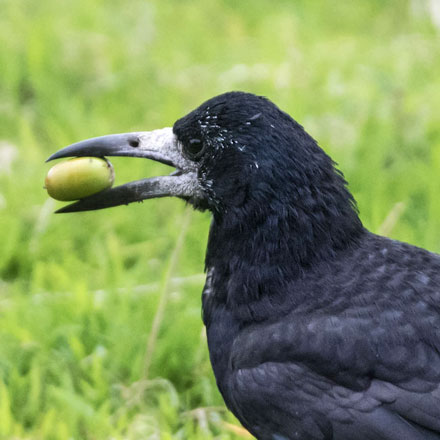 |
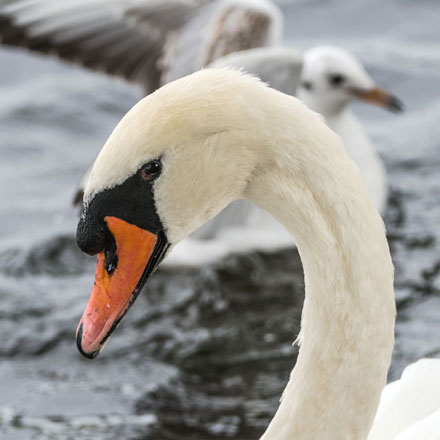 |
| Juvenile Goldfinch |
Ruddy Shelduck |
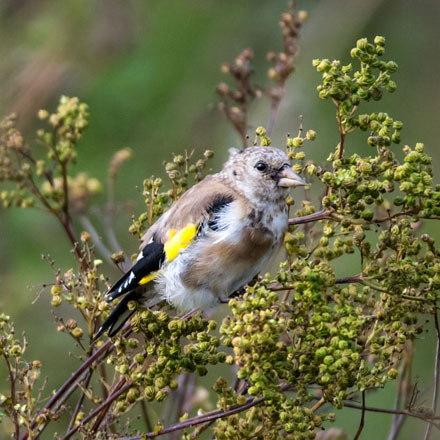 |
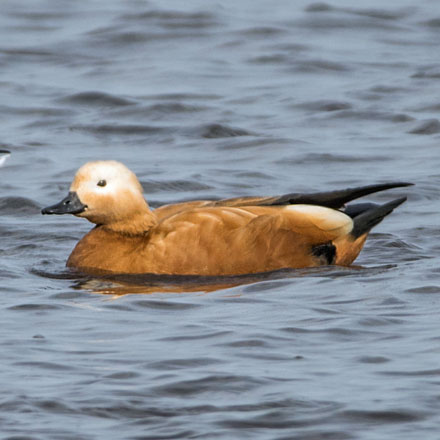 |
8th September 2019:
Skateraw and Belhaven Bay
The BBC weatherman
predicted that the best weather in Central Scotland
was to have been in the East. Both John and I agreed that Skateraw
would be a good choice since we had not visited there since the Spring
(12th of May).
As we had our breakfast in Dalkeith Morrisons (9.5/10: excellent but
John’s fried tattie scone was hollow and over-cooked) the
weather
was more cloudy than I’d expected, but I figured it would be
less
so to the East. And so it proved, with most of the sky brilliant blue
with warm sunshine more than compensating for a rather chilly breeze. I
stopped the car just past the row of houses at the start of the harbour
approach road. I had seen some beautiful butterflies on flowers of
Buddleja, the Butterfly
Bush .
We got some nice pictures of Red Admiral and Peacock (taken by John)
(see “Pictures of the Week”, below). We were
watched by
some captive species, namely Fantail Pigeons, a wee dog and, rather
unexpectedly, a possible Long-eared
Owl
(caged). Rather more free were the many swooping Barn Swallows catching
the last of the airborne insects before the seasons turn cold and they
head south to warmer climes.
| Fantail Pigeon |
Nice wee Dug |
Long - eared Owl |
Barn Swallow |
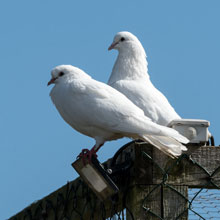 |
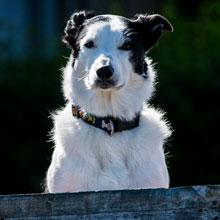 |
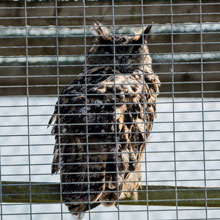 |
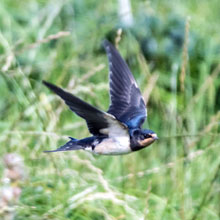 |
Between flights the
Swallows rested on the overhead telephone wires,
offering welcome photo opportunities for me. I also snapped a Tree
Sparrow alongside the Swallows, as well as a juvenile Starling. There
were also flocks of flighty, noisy Goldfinches dashing about. Some of them
were feeding on Thistle seeds in an adjacent field. At the side of the
field a group of Rabbits were watching us carefully (see
“Pictures
of the Week”, below).
| Barn Swallow |
Tree Sparrow |
Juvenile Starling |
Goldfinch |
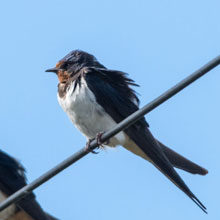 |
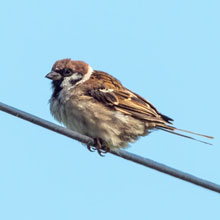 |
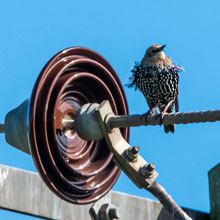 |
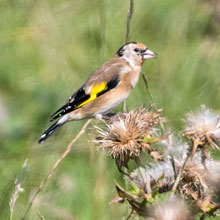 |
We parked and then
walked along the shoreline towards Chapel Point at
the west side of the Bay (shown below: view from Links Cottage). Note
Torness Power Station dominating the scene.
I followed a juvenile
Pied Wagtail as it trotted it’s way along
the sandy beach, occasionally dashing to catch a fly. On the
water’s edge a half dozen Ringed
Plovers
were feeding. There were several juveniles in the group. A solitary
Dunlin made its way along the damp sands. At first we thought it was a
Knot, but on closer inspection we could see it was a wary Dunlin.
| Pied Wagtail |
Ringed Plover |
Juvenile Ringed Plover |
Dunlin |
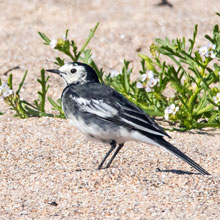 |
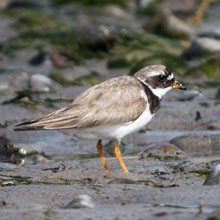 |
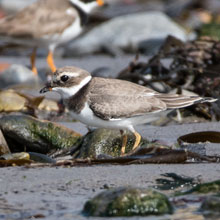 |
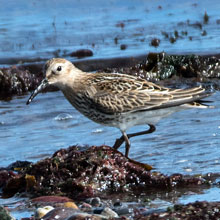 |
We left the beach and
came to the ruin of a small building. My eye caught sight of a leaping Common
Field Grasshopper .
I followed its movement until I was able to photograph it with my
trusty wee Lumix LX5. Close by I thought I’d found a found a
newby hoverfly on some Common Ragwort only to find it was a common
dronefly, Eristalis
Arbustrum ,
with less usual markings. We trekked through high grass to
reach
the edge of the rocky shore. Looking west we could see a beautiful view
of Barns Ness lighthouse with the Bass Rock in the background (see
“Pictures of the Week”, below). As we sat taking in
the
view a female Linnet landed on the rocks in front of us. Those rocks
are in fact very interesting to geologists since they are part of an
extensive shore
platform
that shows evidence of a variety of processes of weathering and
erosion. We pressed on through towards the Point, flushing a Redshank as
we did so.
| Common Field Grasshopper |
Hoverfly - Eristalis arbustrum |
Female Linnet |
Redshank |
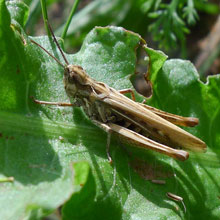 |
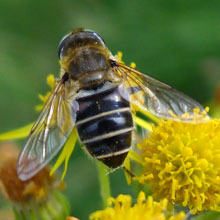 |
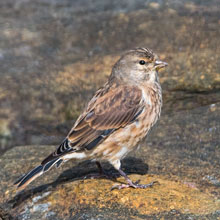 |
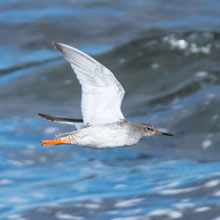 |
While at the Point we
saw only a Rock Pipit and a passing Curlew. It
was very quiet so we walked back along the grassy west edge of the bay.
I photographed a pretty clump of Common
Knapweed
hanging over the side of the low cliff. Another flock of Goldfinches
swarmed over our heads and settled on a bush not far from the memorial
at the edge of the Point.
| Rock Pipit |
Curlew |
Common Knapweed |
Goldfinch |
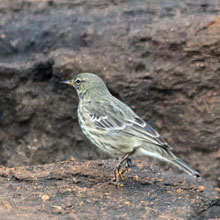 |
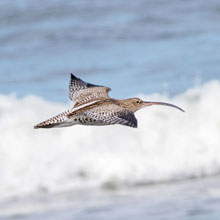 |
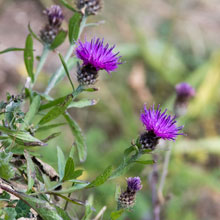 |
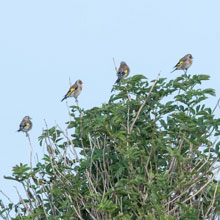 |
With the sunshine still
bright we drove down to Belhaven Bay and walked to Seafield
Pond
for a brief hour. The tide was low and the seashore was about half a
mile from our path. A lone Curlew was pecking at this and that as it
wandered along the exposed sands. A Herring Gull flew over our heads and
joined the quite large mass of gulls that were roosting on the dry bay.
As we turned off the path and down toward the pond, we paused at a
flowery corner as I had spotted a Humming Syrphus (Syrphus Ribersii) as
it explored the Great Bindweed that draped a bush. I heard the familiar
song of a Robin and quickly located it as it hid behind the leaves of a
tree .
| Curlew |
Herring Gull |
Hoverfly - Syrphus ribersii |
Robin |
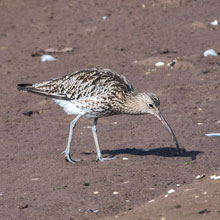 |
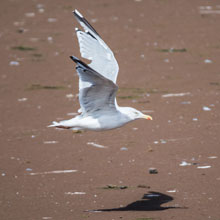 |
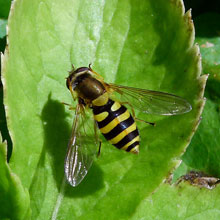 |
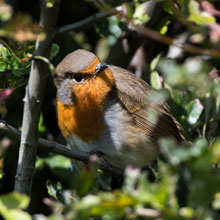 |
The Pond was populated
mainly by jaded ducks but no swans. I took an
arty shot of a young Moorhen feeding, silhouetted against the light.
There was a large area of flowering Amphibious
Bistort
at the water’s edge and a watchful male Little Grebe was
diving
for fish some 30m from us. But that was about it. On the way back to the
car we did see a Speckled Wood butterfly sunning itself on the short
grass.
| Juvenile Moorhen |
Amphibious Bistort |
Little Grebe |
Speckled Wood Butterfly |
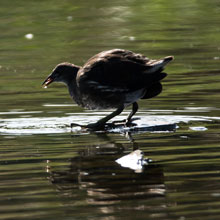 |
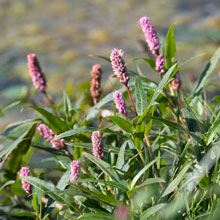 |
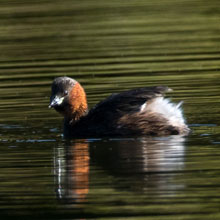 |
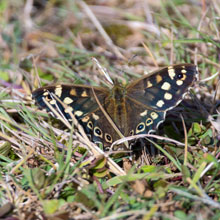 |
It had been one of those
days where we had a very pleasant time
observing familiar sightings and not really caring that we
hadn’t
spotted a rarity. We were just glad to be there. As usual our tea and
cake, cream and jam muffins, rounding things off nicely. On the drive back
I realised I was yearning for some west coast action, so
let’s hope the weather picks up in the west for our next trip.
Pictures of the Week:
| Red Admiral Butterfly |
Peacock Butterfly |
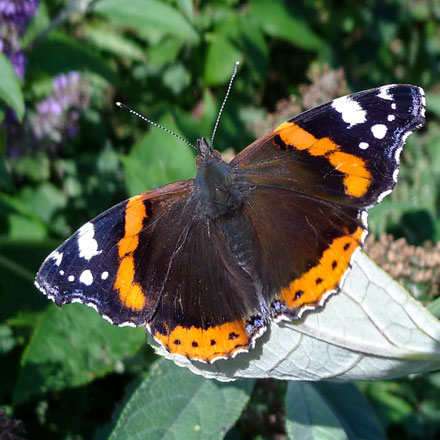 |
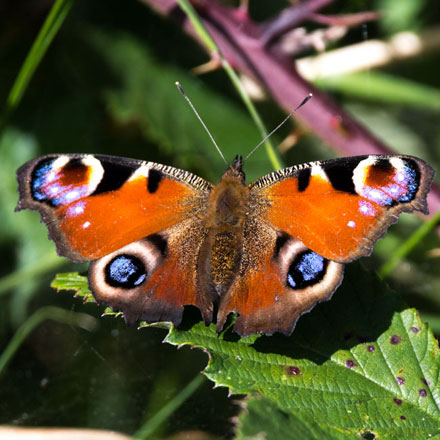 |
| Rabbit |
Barns Ness Lighthouse |
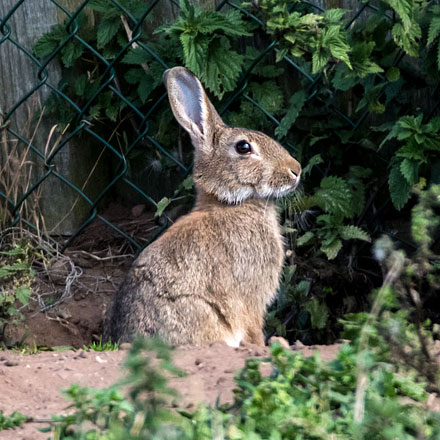 |
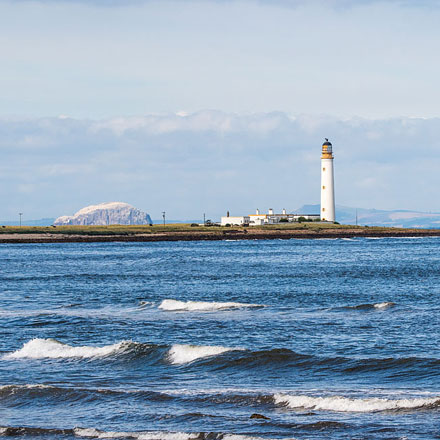 |
1st September 2019:
Musselburgh and Port Seton
With last
week’s car problems firmly in the past, we drove to
Musselburgh to follow up some interesting sightings there. Dalkeith
Morrisons served up a pair of lovely breakfasts (9/10: -1 for skimpy
bacon) that set us up for a few hours of feathery excitement. The
weather was sunny as we parked in the Levenhall car park with more of
the same predicted for the rest of the trip. We walked from there down
to the sea wall. I’d visited there on the previous Monday
when I
photographed some Common
Seals
lounging at low tide. Unfortunately the tide was even lower on Sunday
and the seals were nowhere to be seen. However the beach was packed
with birds, mainly noisy Sandwich Terns. A group of Oystercatchers and Bar-tailed
Godwits
were foraging in the same area for invertebrates, and a bit further
along John spied a couple of Turnstones still showing signs of their
breeding plumage (See, “Pictures of the
Week”,below).
| Common Seal |
Sandwich Tern |
Oystercatcher |
Bar - tailed Godwit |
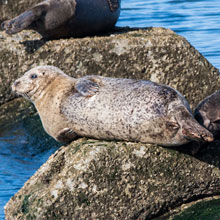 |
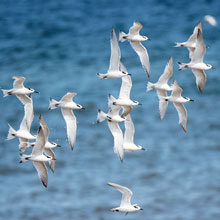 |
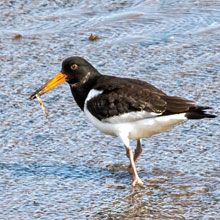 |
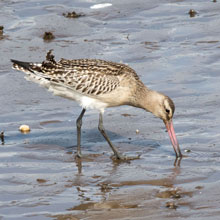 |
There were a few
flowering plants still in bloom. I was drawn to a big
clump of Tufted Vetch that was showing seed pods, and vivid yellow Tall Melilot,
widespread in the area. Several
patches of Scentless Mayweed were also on show. A few hundred metres
offshore there were several small groups of Velvet
Scoters bobbing
in the sea swell. We had a good look for the Surf
Scoter but this was
difficult as the birds were distant and appeared to be roosting with
their beaks tucked under their wings.
| Tufted Vetch |
Tall Melilot |
Scentless Mayweed |
Velvet Scoter |
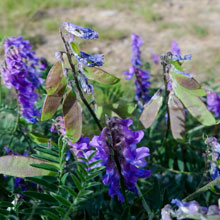 |
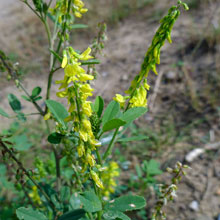
|
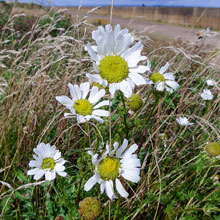 |
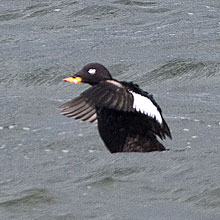 |
We moved into the
Scrapes, starting with the north-most hide. On our way in we watched a
lovely Speckled
Wood
butterfly as it explored a Bramble bush (also see,
“Pictures
of the Week”,below). From the hide we were pleased to see
lots of
birds. Greylags were close in and a few Knot were wading, probing the mud for
invertebrates. A Curlew stood on the edge of the second scrape,
watching for danger.
| Speckled Wood Butterfly |
Greylag Goose |
Knot |
Curlew |
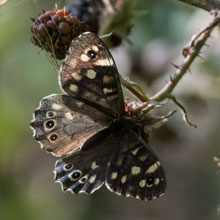 |
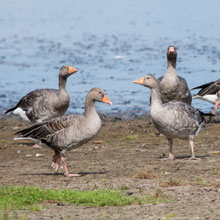 |
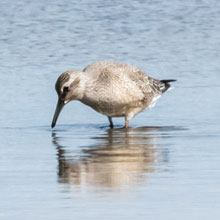 |
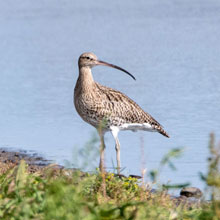 |
We were greeted with a
flypast of Lapwings . We couldn’t see what
put them up, but it was an impressive sight.
Looking to the far left
we could see a line of various bird species,
mainly Lapwings with a few Knot, Dunlins and a couple of Ruff. I think a
Curlew
Sandpiper may be
amongst them.
Also on the second
scrape was a Black-tailed
Godwit still
in its ruddy-coloured summer plumage. A single Lapwing wandered on the
edge, the Sun catching its plumage at the correct angle to display its
iridescent colours. The view from the next hide was much quieter with
only a few wading Redshanks to the right. The third hide was a bit
better. A Curlew was fairly close to the hide, poking the damp ground
at the edge of the scrape. In the South-East scrape a pair of moulting
Shelduck were roosting.
| Black - tailed Godwit |
Lapwing |
Curlew |
Shelduck |
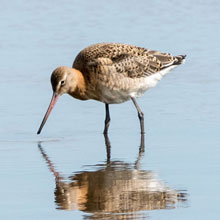 |
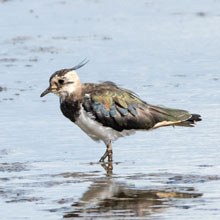 |
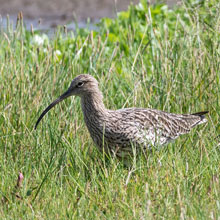 |
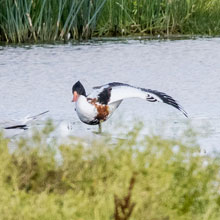 |
I spotted a Ruff
working its way across the back edge of the South scrape. It was
disturbed by the arrival of a pair of squabbling Redshanks and ran (not
flew) across to the SE scrape. We decided to retrace our steps back to
the car. As we left there were large numbers of Oystercatchers, Curlew
and Godwits pouring into the reserve. I snapped a Painted Lady butterfly
on a Dandelion noting to John that we’d seen far fewer of
them
than in recent weeks. John thought it could be one of the next
generation born in Scotland and about to fly south towards Africa.
| Ruff |
Redshank |
Oystercatcher |
Painted Lady Butterfly |
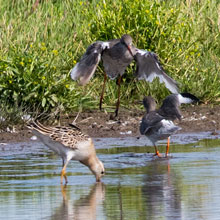 |
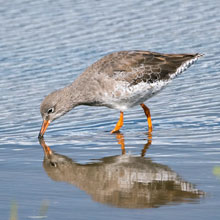 |
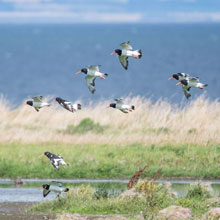 |
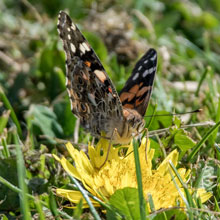 |
On reaching the sea wall
a pair of very scruffy moulting Linnets landed
near us on the wall, a parent bird feeding its fledgling. The tide was
close to its predicted 6m height. Sandwich Terns were fishing 50 mts
offshore. Occasionally one passed with fish in beak presumably seeking
its chick. We were on the look out for a pair of Black Terns that had
been seen the day before. They didn’t show but a Common
Tern
passed us flying west. A single female Eider paddled past and soon we
were on our way to Port Seton to catch the last of the incoming tide.
| Linnet |
Sandwich Tern |
Common Tern |
Female Eider |
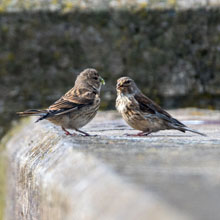 |
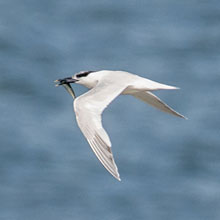 |
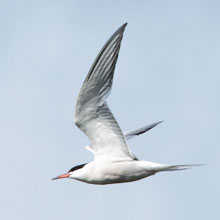 |
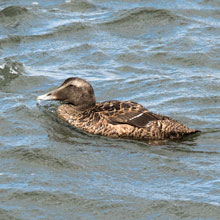 |
When we first arrived at
Port Seton, at the site of the old outdoor
pool, we were disappointed to find that most of the rocks were still
exposed with a large number of birds, mainly Sandwich Terns, sitting on
rocks 200 mts offshore. We waited for these birds sitting to be
encouraged to move nearer the shore by the incoming tide. Our plan
worked as an increasing number of passing birds, such as Cormorants and
Bar-tailed Godwits, soon made us realise that the water was rising
relatively quickly. I took some pictures of a Herring Gull just before
the thrashing waves encouraged it off of its rocky perch.
| Cormorant |
Bar - tailed Godwit |
Turnstone |
Herring Gull |
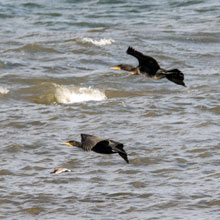 |
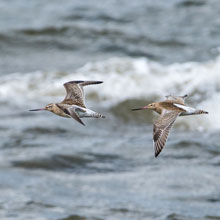 |
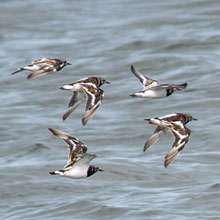 |
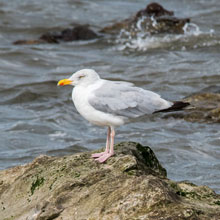 |
Less than half an hour
after our arrival our plan had worked since the
Sandwich Terns had moved and settled much nearer to the sea wall. This
allowed me the opportunity of taking some nice shots. The vast majority
of birds were of adult Sandwich Terns and their juveniles. Occasionally
an individual Common Tern had a wee rest on the near rocks. The one
shown below is showing summer plumage. But unfortunately we
didn’t see a Roseate Tern or a Black Tern.
As had our tea and
Danish pastries we had little to complain about as
we had photographed many sightings, most of the birds, in sunny
weather. Sure we had dipped on a few of the rarer birds but
that’s the nature of the hobby. However it wasn’t
quite
over for me. That early evening as I was at home washing a few dishes,
a female Sparrowhawk
dived onto my hedges, home to a flock of House Sparrows. Although
it’s move was fruitless, it waited on top of the
hedgerow
for 10mins, probably aiming to catch any bird that was stupid enough to
make a dash for it. However it soon was up and away on its next mission
(see, “Pictures of the Week”,below). A great end to
an
already enjoyable day.
Pictures of the Week:
| Turnstone |
Speckled
Wood Butterfly |
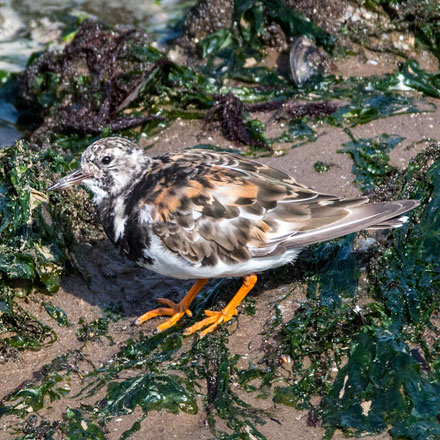 |
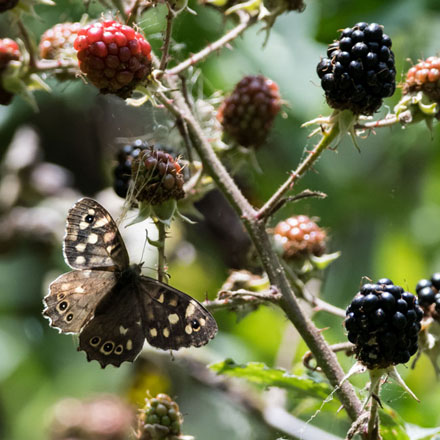 |
| Sandwich Tern |
Sparrowhawk |
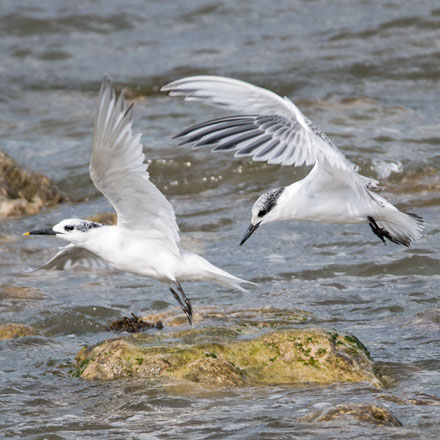 |
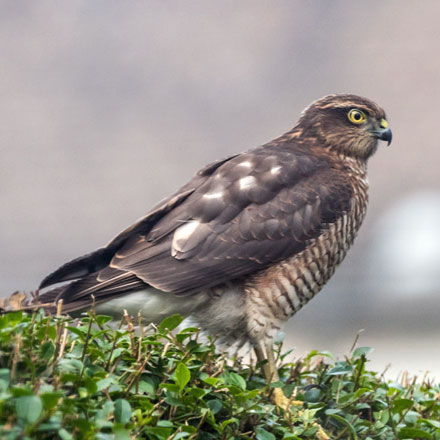 |
Highlights
- September 2019
Something a bit different this week.
We present a gallery of my favourite pictures I’ve taken
during
September 2019. They are not listed in the order they have been taken,
but according to a series of themes. I’ve kept commentary to
a minimum,
preferring to let each picture talk for itself.
WINGS
| Black-headed Gull |
Sandwich Tern |
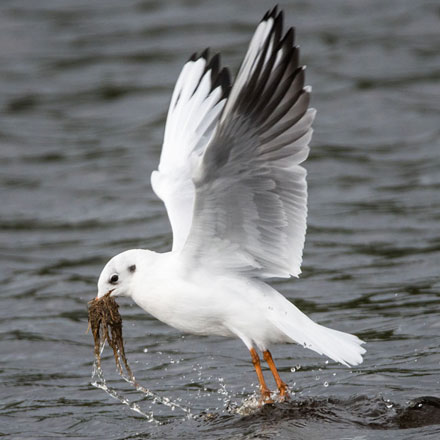 |
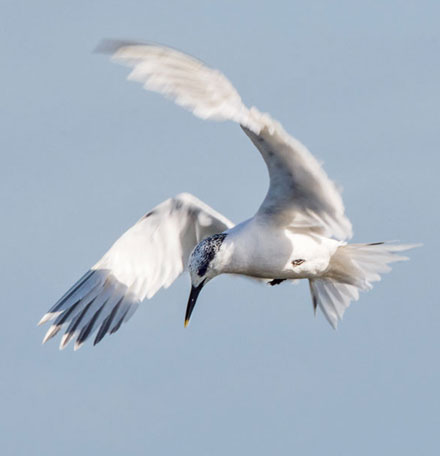 |
| Juvenile
Goosander |
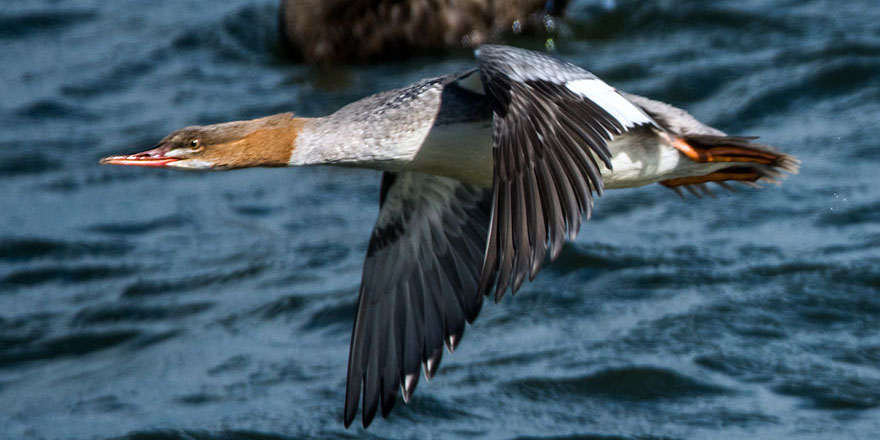 |
FUNGI
| Clustered Bonnet |
Conifer Tuft |
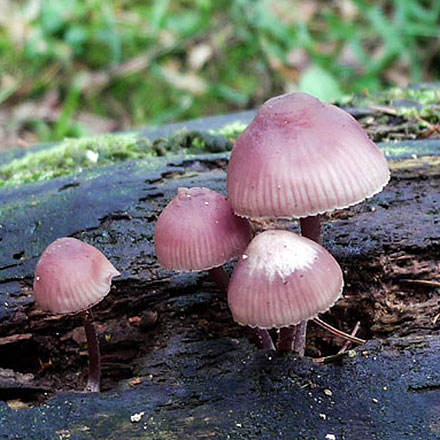 |
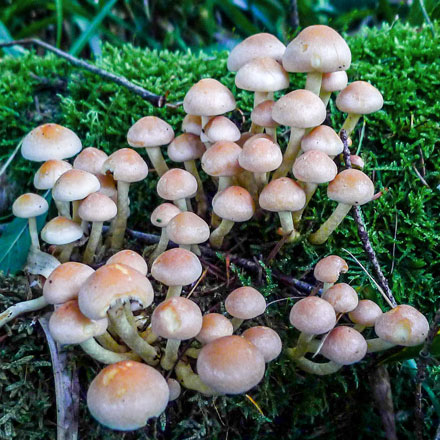 |
| Panther Cap |
Shaggy Parasol |
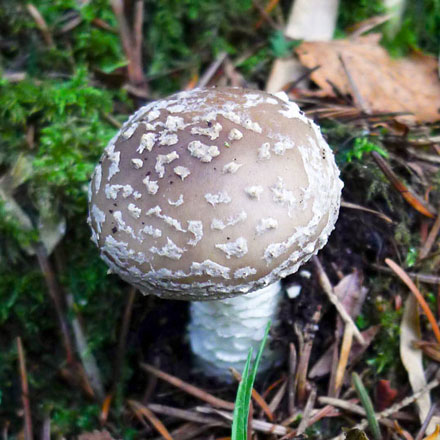 |
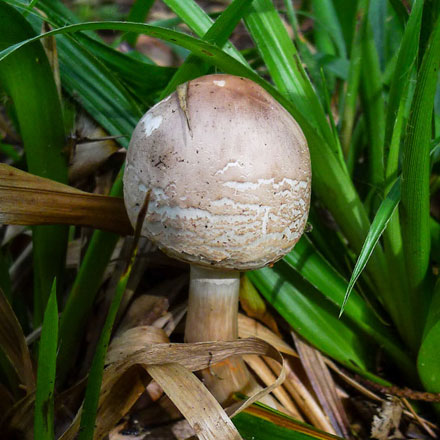 |
PORTRAIT
| Grey
Heron |
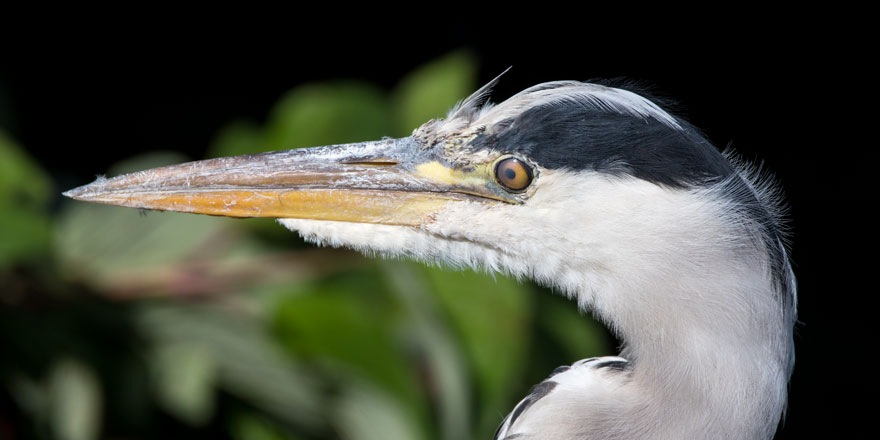 |
| Cormorant |
Pink - footed Goose |
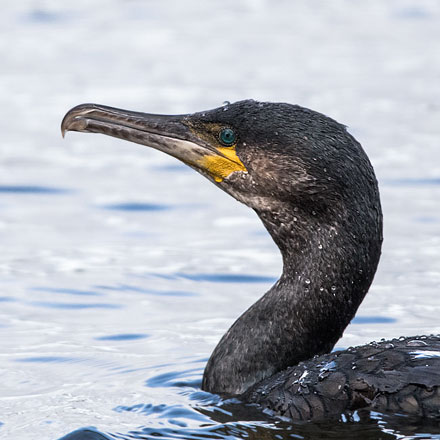 |
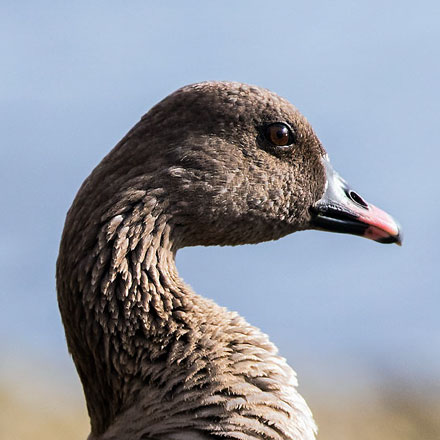 |
INVERTEBRATE
| Common Furrow Bee |
Fly - Dexiosoma caninum |
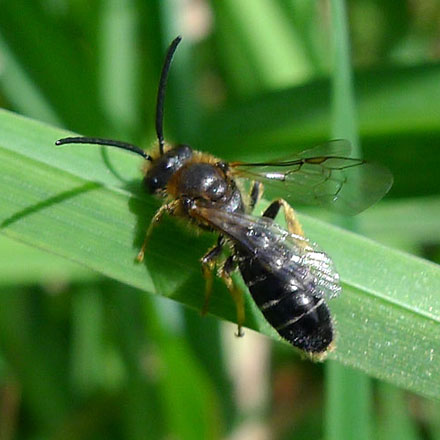 |
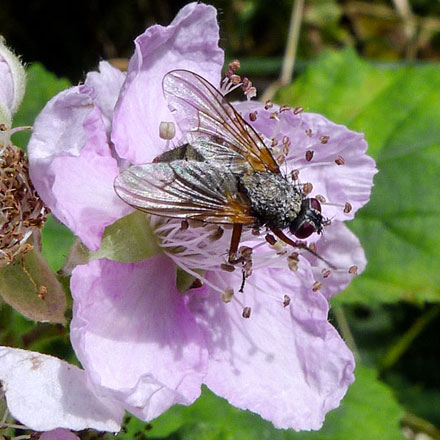 |
| Caterpillar of the Elephant Hawk Moth |
Hoverfly - Leucozona glaucia |
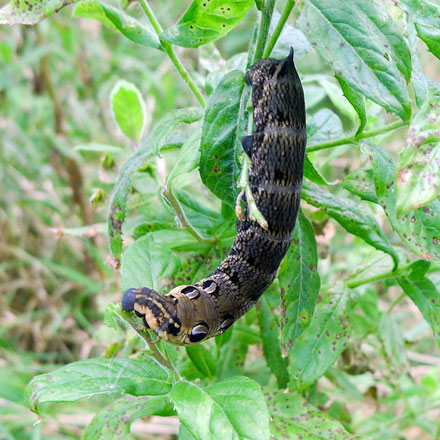 |
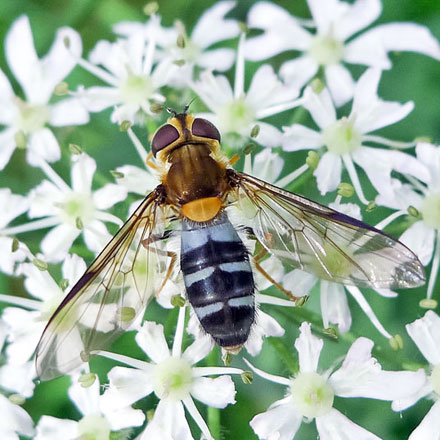 |
| Meadow Grasshopper |
Small Copper Butterfly |
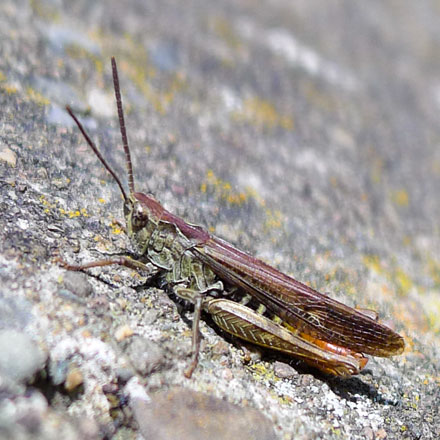 |
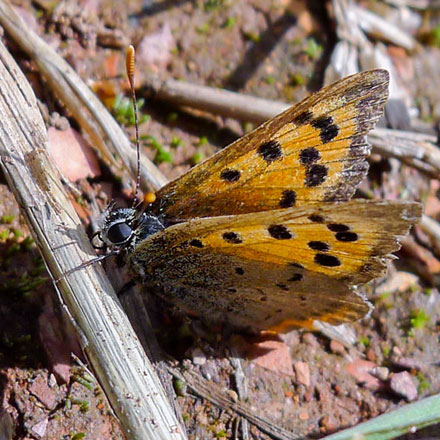 |
| Caterpillar
of the Poplar Hawk-Moth |
 |
| Painted Lady Butterfly |
Bug: Tarnished Plant |
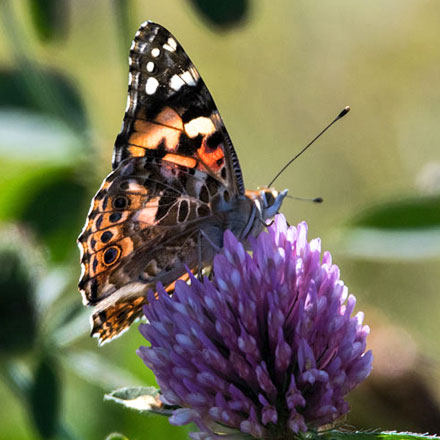 |
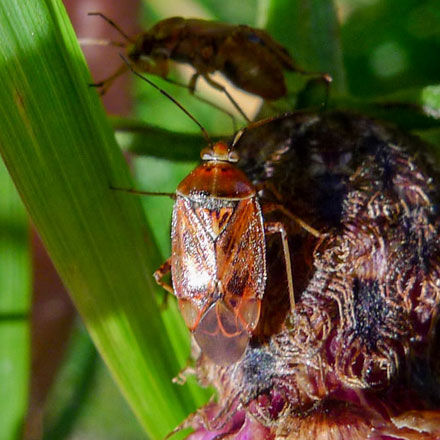 |
SHORE BIRD
| Curlew |
Juvenile Eider Duck |
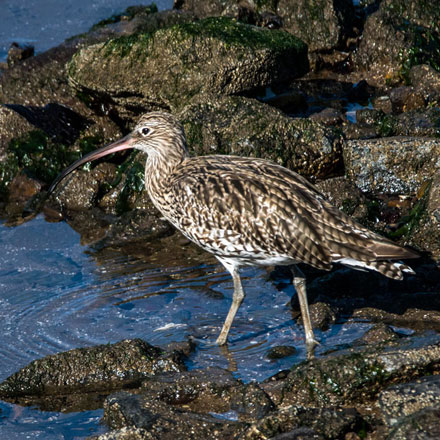 |
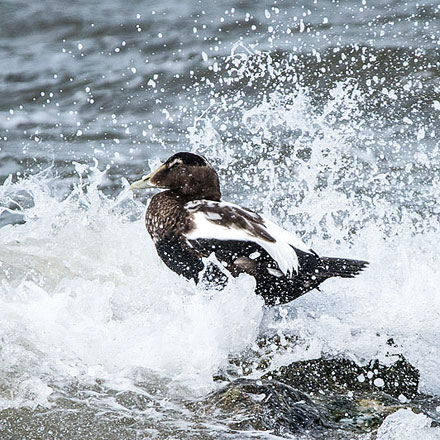 |
| Oystercatcher |
Redshank |
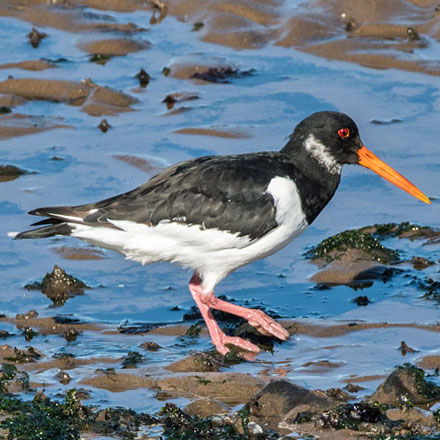 |
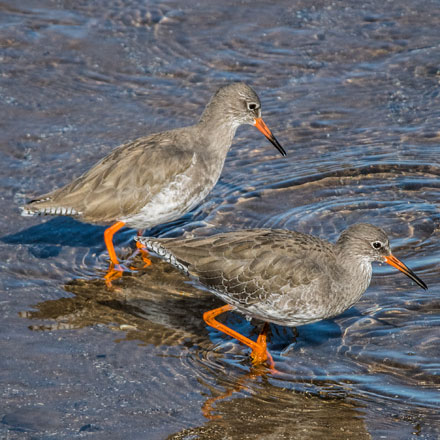 |
REFLECTIONS
| Bar - tailed Godwit |
Common Coot |
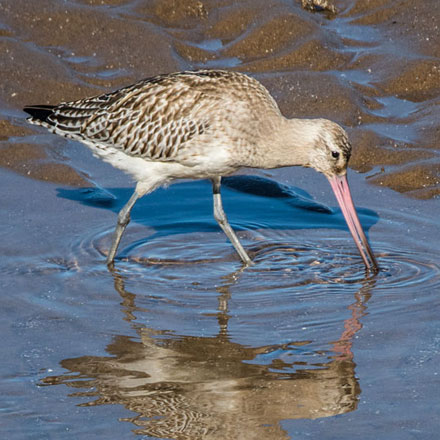 |
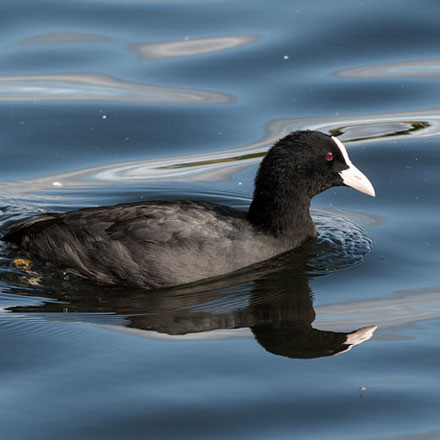 |
| Juvenile Female Goosander |
Mute Swan |
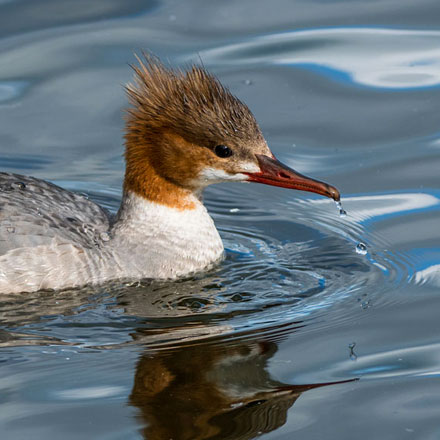 |
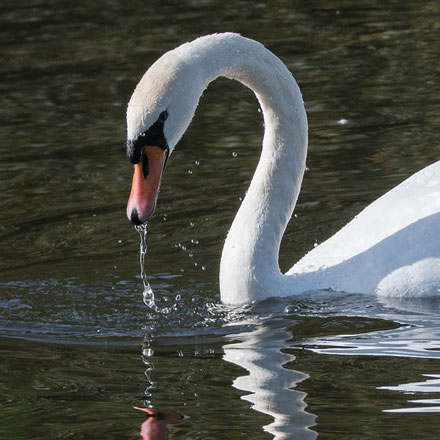 |
PARK BIRD
| Great
Crested Grebe |
 |
| Goldfinch |
Hybrid Hooded Crow X Carrion Crow |
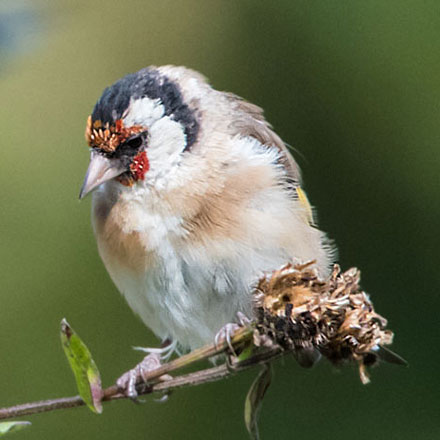 |
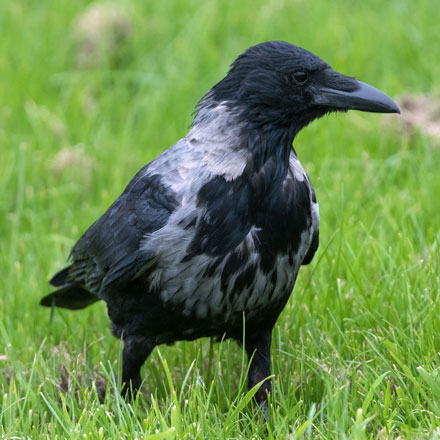 |
| Kestrel |
Robin |
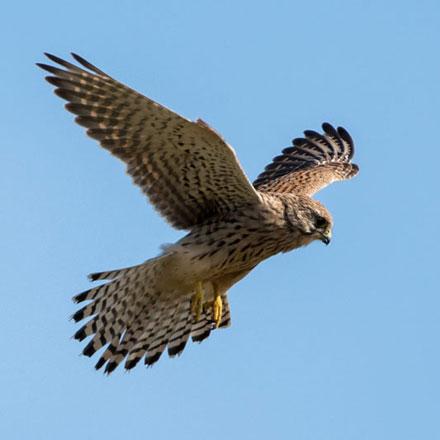 |
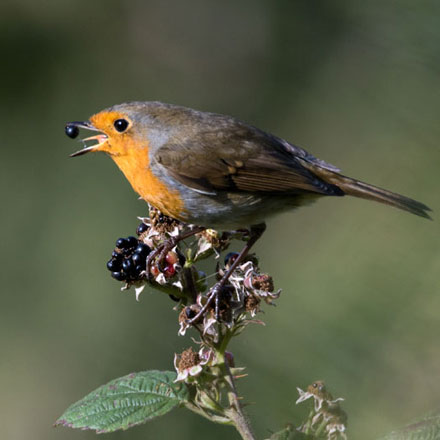 |
| Kingfisher |
 |
GULL
| 1st Cycle Black - headed Gull |
Black - headed Gull |
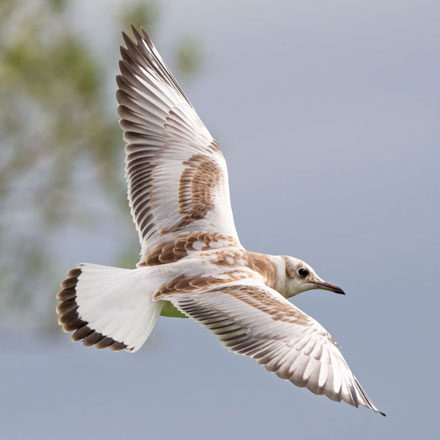 |
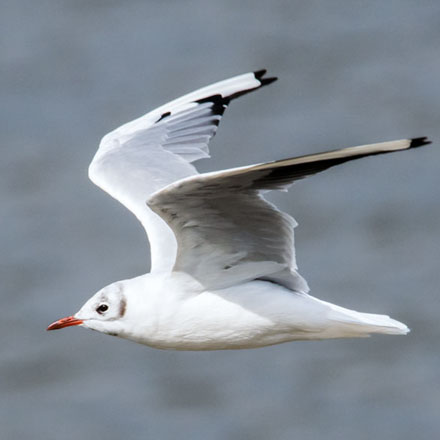 |
| 1st Cycle Lesser Black - backed Gull |
Mediterranean Gull |
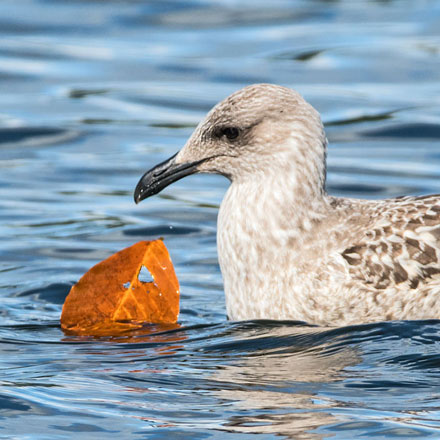 |
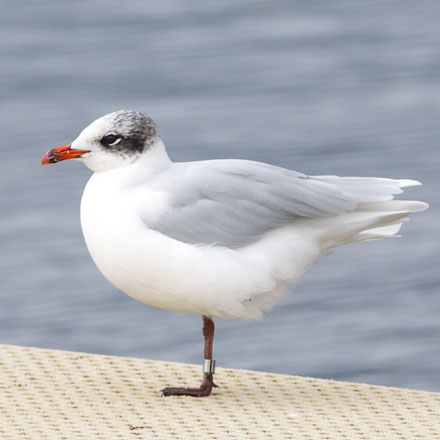 |
Back To Top
|

